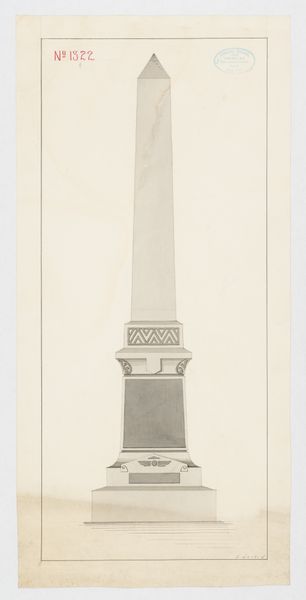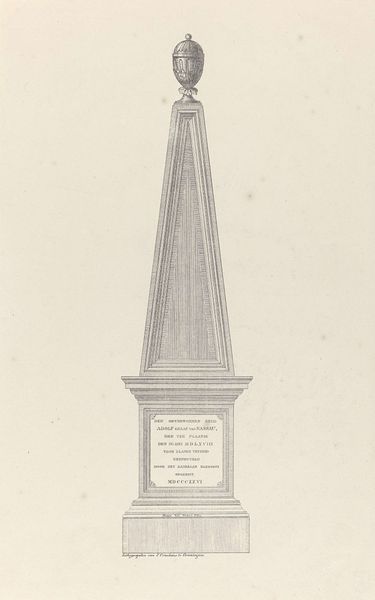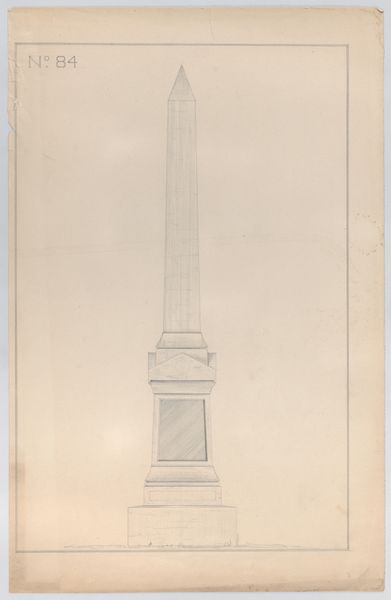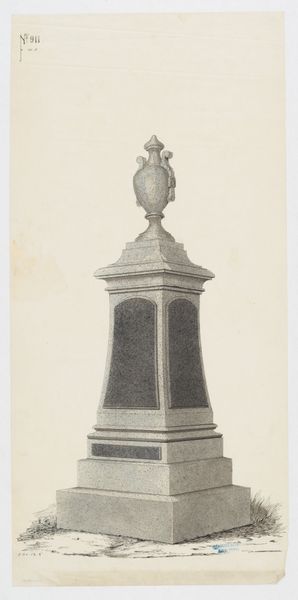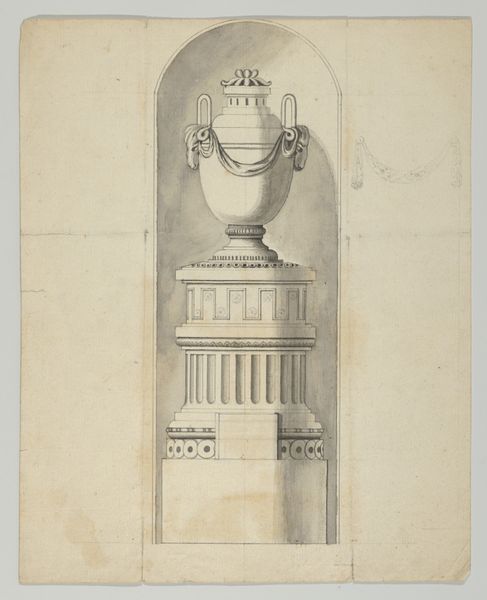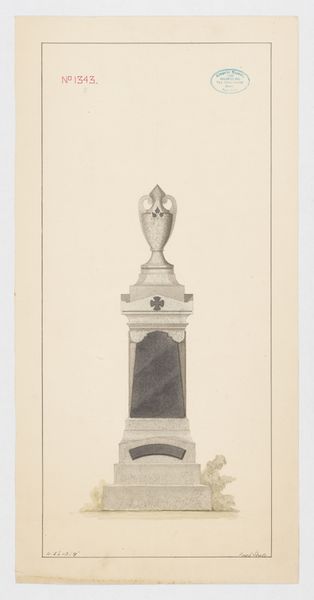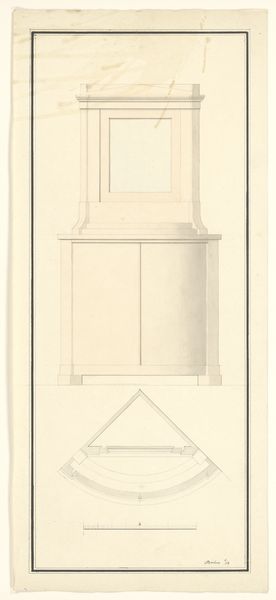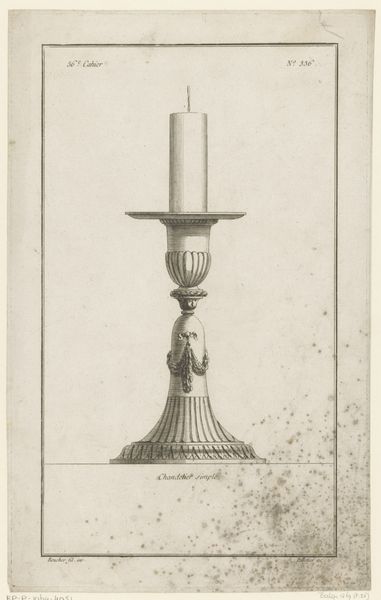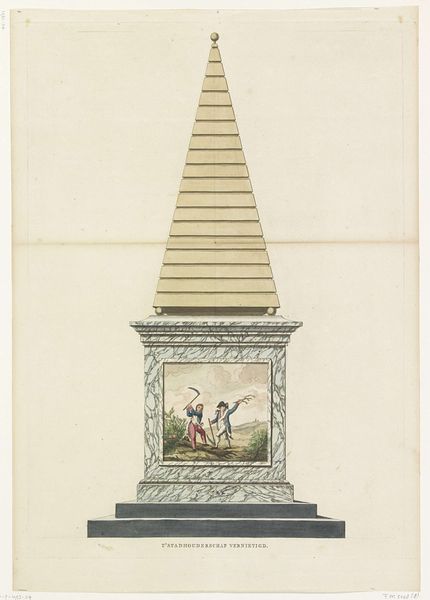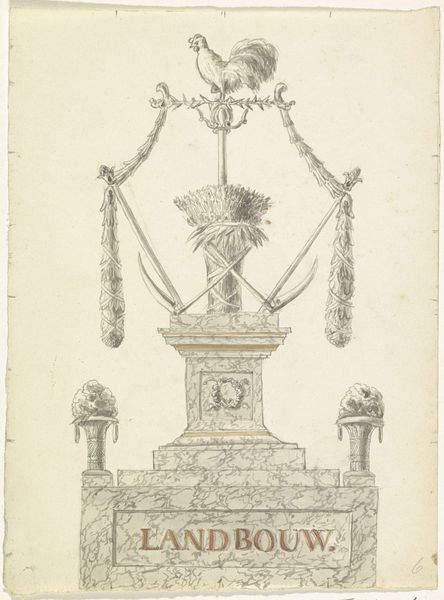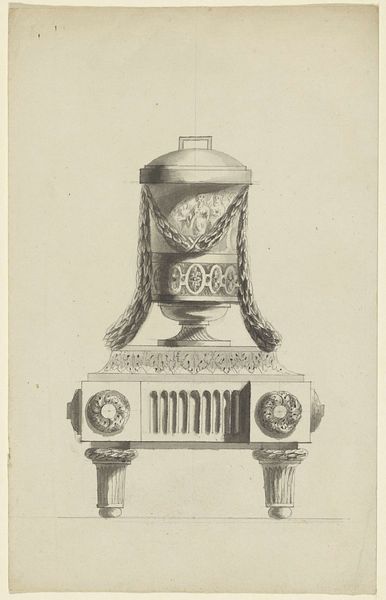
Ontwerp voor een monument voor de Leidse buskruitramp, 1807 1807 - 1808
0:00
0:00
cornelisapostool
Rijksmuseum
Dimensions: height 543 mm, width 369 mm
Copyright: Rijks Museum: Open Domain
Cornelis Apostool drafted this design for a monument commemorating the Leiden gunpowder disaster of 1807. The tragedy occurred in a city still under the profound influence of the Enlightenment, a philosophical movement that championed reason and progress. Apostool’s monument—an obelisk on a pedestal—was intended to mark a moment of collective trauma. The gunpowder explosion, which killed over 150 people and destroyed hundreds of homes, challenged the Enlightenment’s narrative of human perfectibility, revealing instead the unpredictable nature of catastrophe. The monument's design blends neoclassical forms with symbols of remembrance. Its clean lines and balanced proportions reflect Enlightenment ideals of order and rationality, while the empty circular space at its base suggests a void or absence, a recognition of loss that defies rational explanation. It seems to ask, what kind of visual language can adequately honor such a devastating event? How do we balance the need for remembrance with the desire to move forward?
Comments
No comments
Be the first to comment and join the conversation on the ultimate creative platform.
